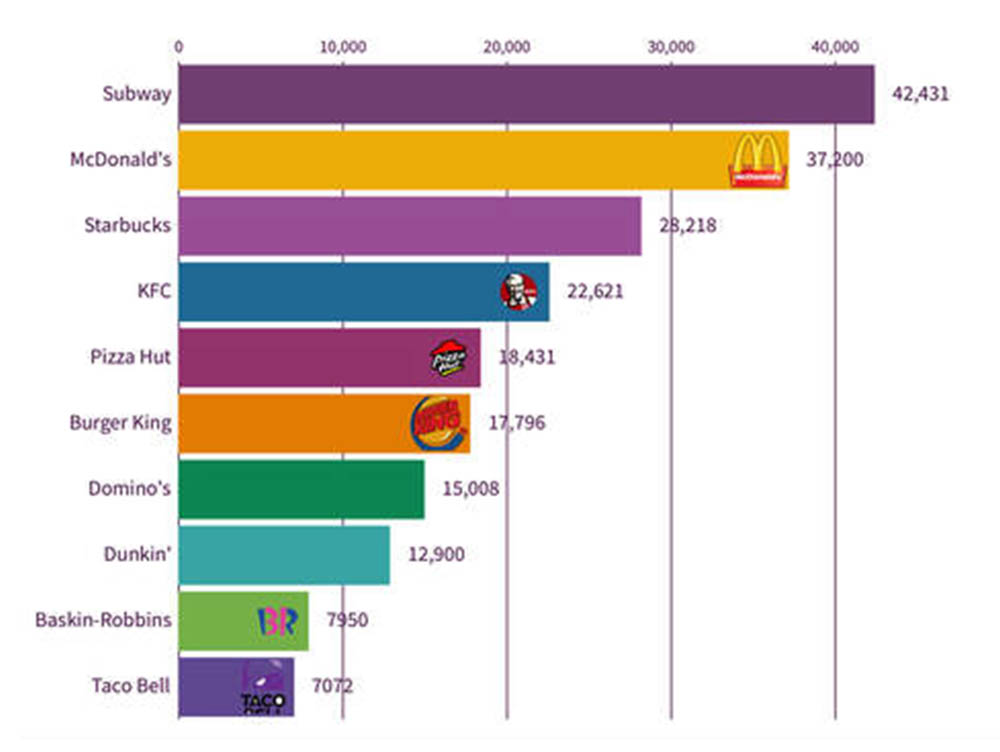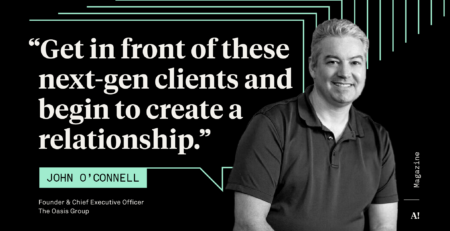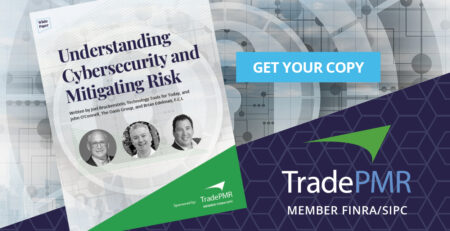3 Inflection Points that Help Your Business Grow

Flourish Studios created an animated bar chart titled the Biggest Fast Food Chains in the World 1971-2019 (Stores)1. The animation is an incredible view into a changing industry.
The animation is interesting, but the stories behind some of the rapid growth spurts that you see in the animation are even more interesting. In this post we will examine how these firms grew so quickly and how did their Unique Value Proposition contribute to that growth.
This graphic offers powerful parallels for other industries such as:
- How customer feedback can drive intense periods of growth when you listen.
- How your Unique Value Proposition attracts potential customers to you.
- How the right partnerships can be a rocket for your business
We can review 3 key inflection points in the animation, where you see explosive growth, to illustrate these points:
- Listening to your customer – McDonald’s in 1975.
- Unique Value Proposition – KFC in 1980.
- Partnerships are Valuable – Subway in 2003.
Listening to Your Customers
McDonald’s had grown steadily since Ray Kroc, a seller of Prince Castle brand Multimixer milkshake machines, traveled to San Bernardino, California to find out why the McDonald brothers were using 8 of his machines.2 He brought McDonald’s onto the road to franchising3 in April of 1955 and established their Unique Value Proposition.
McDonald’s has a Unique Value Proposition of consistency for their customer. Nearly every McDonald’s restaurant in the world has the same color scheme, menu, products, food preparation, and packaging. Running a McDonald’s franchise is learned through their Hamburger University that Kroc created to ensure consistency for the customer. A McDonald’s customer can see their golden arches anywhere in the world and expect the same meal.
McDonald’s had a history of listening to its customers and that listening was at the heart of McDonald’s in the 1970’s. They were the first to introduce a breakfast menu in 1974 based on customer feedback.4 McDonald’s learned that soldiers in 1975 were not allowed to exit their vehicles when in Battle Dress Uniform (BDUs). McDonald’s developed a solution and the first drive-thru was opened near Fort Huachuca in Sierra Vista, Arizona to serve soldiers.5
The introduction of the drive-thru and the breakfast sandwich started a massive expansion of McDonald’s franchise restaurants in 1975 that rarely slowed since. Listening to their customers and evolving their products and services based on that feedback while staying true to their Unique Value Proposition of a consistent experience has made McDonald’s the most successful fast food corporation in the world.
Remembering Your Unique Value Proposition
Kentucky Fried Chicken had a humble beginning in 1934 when Harland Sanders took over the lease of the Pure Oil filling station on US Route 25 just outside of Corbin, Kentucky.6 Colonel Sanders started his company with the Value Proposition of quality food served to a table in the restaurant with good service.
The company was sold to Heublein, a Connecticut based packaged food and drinks company in 1971.7 Heublein had no experience in fast food restaurants and their rapid expansion in the 1970s domestically and abroad caused them to lose sight of their core values and reduce quality significantly. Colonel Sanders publicly criticized the firm and regretted selling his company throughout the early and mid-1970s.
Heublein appointed Michael Miles in January 1977 to find out what was wrong with KFC.8 He re-engaged Colonel Sanders in the business and listened to the Unique Value Proposition that Sanders had at the start of the company. Miles expanded on those core values and created an acronym QSCVFO-FAMP (pronounced qui-SIV-o-famp) that stood for Quality, Service, Cleanliness, Values, Facilities, Operating Factors, Advertising, Merchandising, and Promotion.9 Finally, he spent $6m annually, three times the 1975 budget, to train the employees on the messaging.10
The return to their Unique Value Proposition and making sure that every employee in the company understood it started 30 consecutive quarters of growth in 1979 that you see as the rapid expansion in the animation starting in 1980.
Partnerships are Valuable
Subway’s Unique Value Proposition was to offer their customer a healthier alternative to fried fast food. The Indiana University college newspaper published an article in 1999 about a student named Jared Fogle who lost 245 pounds by eating Subway sandwiches twice a day for a year.11 Subway executives contacted Jared and used his story to promote their Unique Value Proposition.
Walmart was seeking a healthier option for their in-store food services in 2003. Walmart was attracted to Subway’s Unique Value Proposition of a healthier in-store dining experience for their customers. They started a partnership with a lone restaurant inside a Walmart in Ozark, Alabama.12
Walmart began to replace McDonald’s franchises within their stores with Subway in 2003. Subway had overtaken McDonald’s as the leading in store dining option by 2007.13 This validation of Subway’s value proposition drove the explosive growth that you see in the animation starting in 2004 as Subway opened 5,000 locations between 2004 and 2009.
Subway’s ability to stay true to their Unique Value Proposition attracted the partnerships that they needed, starting with Walmart, to propel it to the largest fast-food retailer on the planet by 2019.
Summary
The stories of the fast-food industry’s giants and the animation that represents their rises and falls underscores the undeniable need for a Unique Value Proposition. It shows how listening to your customers about it and staying true to it to attract new customers and partnerships will fuel incredible growth for your business. Think about that the next time you pass one of the dozens of fast-food restaurants near you.






